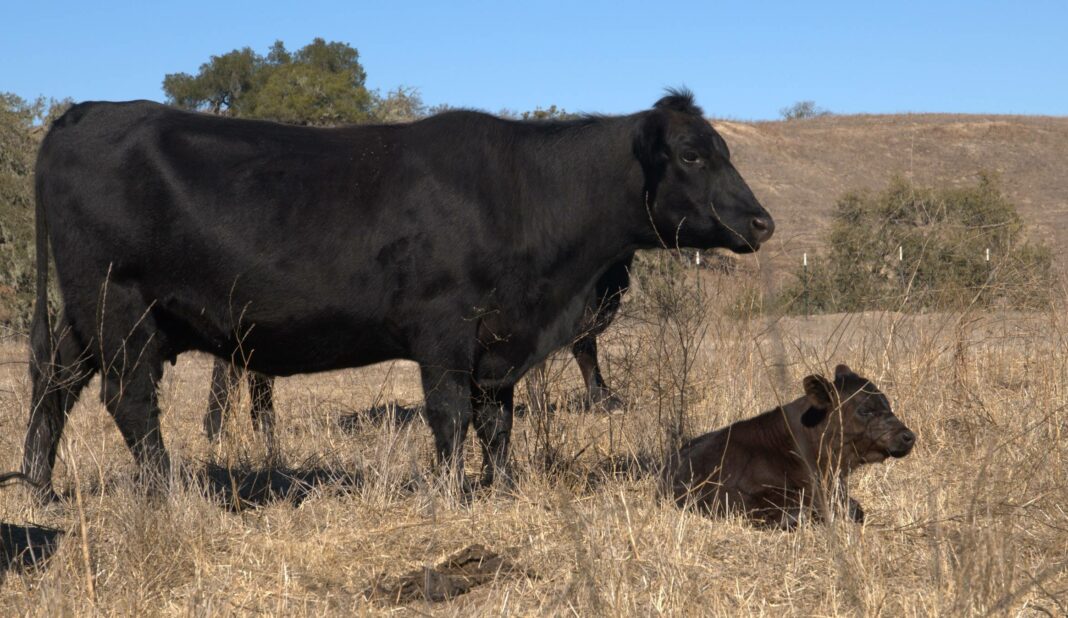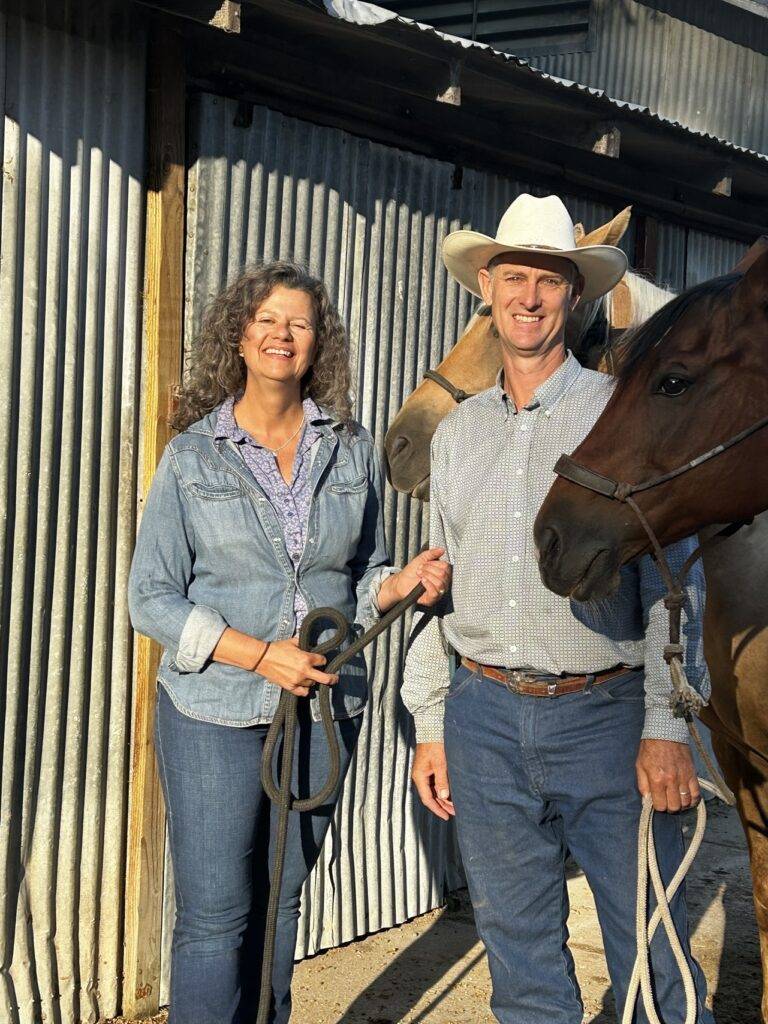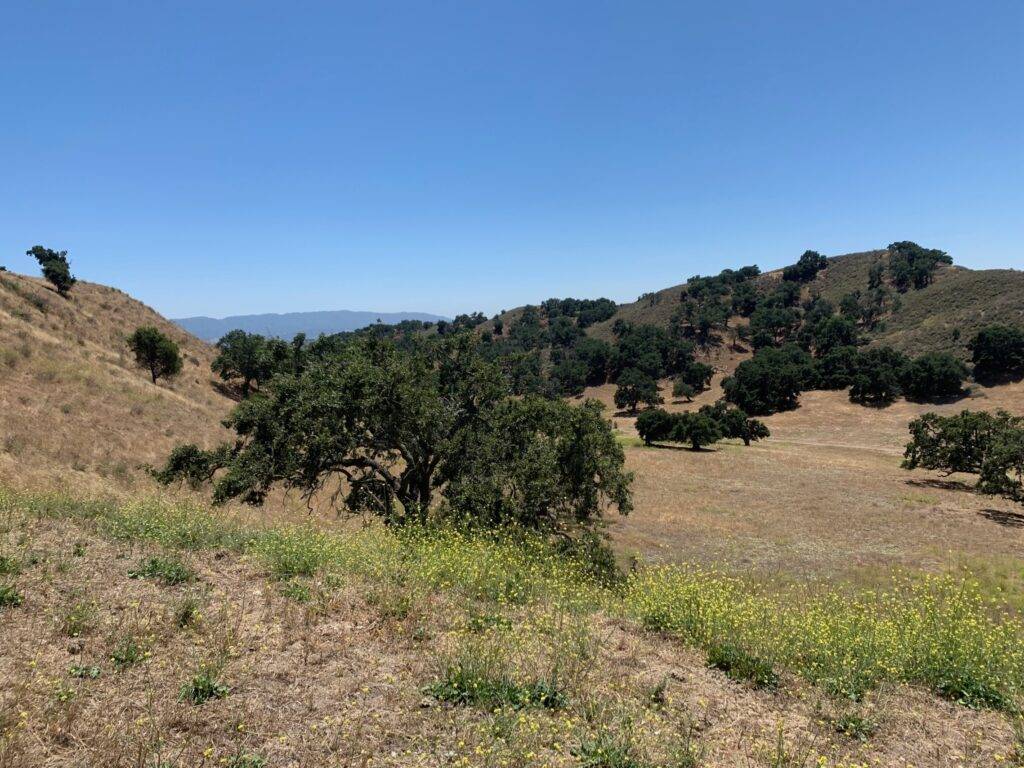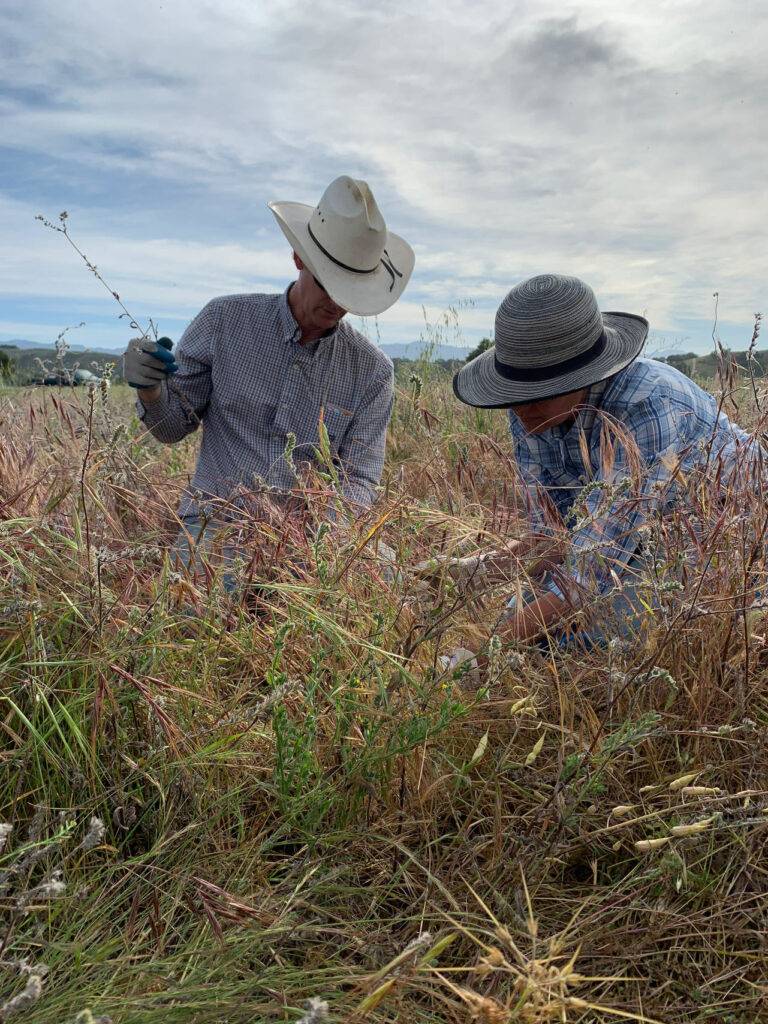Russell Chamberlin and Mary Heyden are trying new techniques to make the Ted Chamberlin Ranch not just greener, but more productive.
If you imagine a California cattle ranch, chances are it looks like the Ted Chamberlin Ranch: 8,000 acres of picturesque rolling hills and golden grass dotted with California live oaks in Los Olivos in the Santa Ynez Valley north of Santa Barbara. One thing not in sight on this warm July afternoon are the cows. “It never even crossed my mind,” rancher Russell Chamberlin says with a laugh.
And if you imagine a rancher, chances are you’re picturing Russell. Tall, rangy, handsome, with a white cowboy hat over blue eyes. Snap-button shirt, jeans, cowboy boots, and a belt buckle. Also warm, friendly, knowledgeable, and engaging.
We drive through the ranch with Russell and his cousin, Mary Heyden, with whom he manages the ranch. Mary is also the picture of a rancher (though on this day she is in a T-shirt and isn’t wearing a hat). The pair show off the burned areas where the Santa Barbara County Fire Department conducts controlled burn training, a practice that improves the habitat for both cows and wildlife, and helps firefighters stay prepared. They point out the young oaks that are growing after years of being browsed down, the rancher-to-rancher test site where soil samples are taken after differing grazing regimes are tried.
One thing they don’t show off is the herd of about 175 Black Angus cattle. The cows are on another part of the property, and moving the cattle more frequently is part of the innovative techniques that Russell and Mary are trying to improve both the environmental footprint and the productivity of the ranch. Moving the cattle before they devour every speck of vegetation in an area improves the forage in the long run, promotes more perennial plants, and even results in fewer flies to pester the cattle. In the dry climate of coastal southern California, it takes fifteen to twenty acres to support each cow; it can be as low as three to four acres in wetter climes.
Ted Chamberlin bought the property in 1929, and now the third and fourth generations are working the land. Before Russell and Mary took over the ranch from their uncle in 2015, the strategy had been to graze the cattle in one area until not a blade of grass remained. To do anything else was “leaving money on the ground,” according to Mary. But this led to a lot of weeds and a lot of bare ground for much of the year.
The techniques Russell and Mary are trying come under the heading of “regenerative agriculture,” a suite of management practices that seek to improve the health of the soil, which can lead to more and better forage, better water retention, reduced weeds and pests, the need for less pesticides and fertilizers, and can even store more carbon in the form of organic matter.
Moving the cattle before they devour every speck of vegetation in an area improves the forage in the long run, promotes more perennial plants, and even results in fewer flies to pester the cattle.
But the ranch is primarily a ranch, and the economic realities limit the scope of the changes they can make. “With ranching, it’s so complex,” says Russell. “There are so many things to manage for.” Not everything they’ve tried has made dramatic improvements, so the approach has been incremental.
Mary also notes that she and Russell aren’t critiquing the methods of their neighboring ranchers, but simply trying to find ways to improve their own ranch. If something they do works well, they know it’ll catch on beyond their fence line.
One of the ways they’re seeking to diversify is by trying direct-to-consumer beef sales. The lack of a nearby USDA-certified processing facility prevents them from selling small amounts of beef, but customers can buy a whole or half animal, and end up with a freezer full of roughly 120 or 240 pounds of grass-fed, dry-aged yearling beef in a variety of hand-packed cuts. The beef is free of hormones, steroids, antibiotics, and the animals are humanely harvested on-site.
Beef ranching is generally not an environmentally friendly activity; in fact conventionally raised beef is probably on every top-ten list of enviro no-nos. But people like steaks and burgers, and if we narrow environmentalism to vegetarians, we leave too many people out. That’s why sustainable ranches like the Ted Chamberlin Ranch are so important: By buying from local ranchers that respect the land, the animals, and the planet, you can get a high-quality product with a smaller eco-footprint. And you’re supporting people in rural communities who are making positive changes.
Touring the ranch with Russell and Mary, their respect and love for this property – which looks and acts like a nature preserve as well as a ranch – is evident in every word and action.
For more information, visit chamberlinbeef.com.





